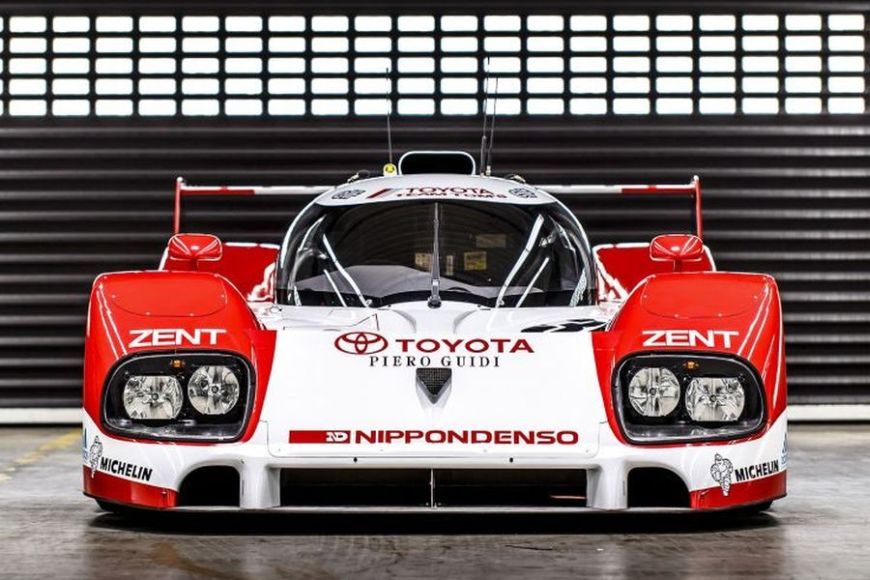Toyota TS010 - an Original TS-series Sports Racing Prototype
Toyota TS010 was a Group C race car which was built and used by Toyota in endurance races, including 24 hours of Le Mans, from 1991 to 1993. It was the first in a series of Toyota’s Le Mans prototypes marked with letters TS, being followed by TS020/GT-One (1998-1999), TS030 Hybrid (2012-2013), TS040 Hybrid (2014-2015) and TS050 Hybrid (since 2016).
In one full season of racing, Toyota TS010 scored one victory in the 1992 World Sportscar Championship and two wins in the 1992 Japanese Sports Prototype Championship, taking both drivers’ and constructors’ titles in Japan. In two three-car participations at 24 hours of Le Mans, the best result was the second place in 1992.

Nine Toyota TS010s were built from 1991 to 1993
New rules forced a development of a new car
Toyota was forced to develop a new race due to rule changes announced the 1991 season of the World Sportscar Championship. Previously, Toyota was using 89C-V and 90C-V cars with R36V 3.6-litre twin turbo V8 engines, which had to be replaced by 3.5-litre naturally aspirated engines. Toyota skipped the 1991 WSC season, developing a new RV10 engine to be ready for the 1992 season.
Tony Southgate designed TS010
Due to the change in engines, Toyota had to develop a whole new chassis too. The Japanese company hired respected designer Tony Southgate, who created the TS010 with aerodynamically advanced body compared to previous Toyota sportscars. The car was capable to cut through the air at speeds as high as 350km/h while delivering huge levels of downforce (nearly double that of an F1 car).
Competitive debut in October 1991 in Japan
The #002 chassis of a car was completed in autumn 1991, so Toyota decided to had a debut in the Japanese round of the World Sportscar Championship at Autopolis in October. The #36 car ran under the banner of Toyota Team Tom’s, being driven by Britons Geoff Lees and Andy Wallace. They finished in the 6th pace, three laps behind Team Sauber’s Mercedes-Benz C291.
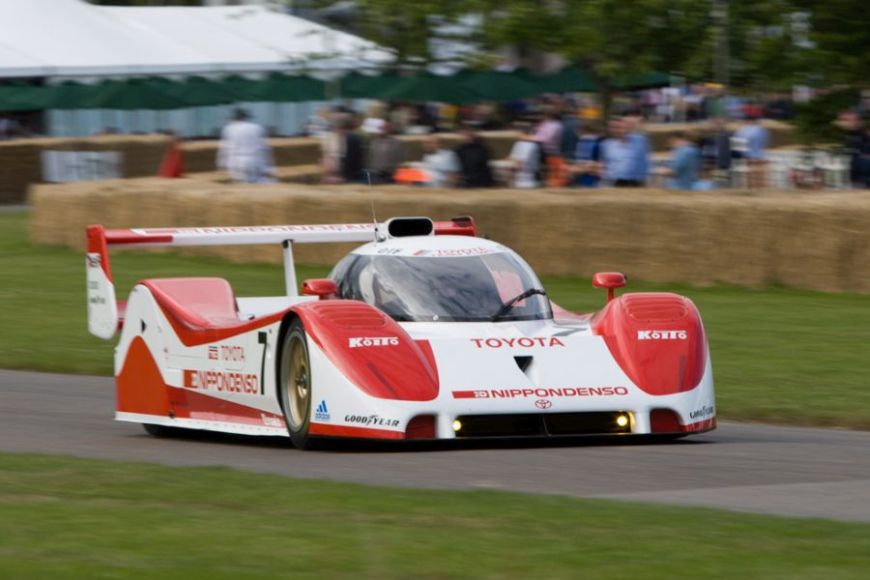
The #7 was the victorious car at WSC race at Monza
First and only world championship victory
Until the start of the 1992 World Sportscar Championship season, four chassis had been completed. Toyota chose to run two cars in races while a third spare car would run in practice only. Toyota Team Tom’s had a fantastic opening of the season, winning the 500 km of Monza.
Geoff Lees and Hitoshi Ogawa were the winners in the #7 car, beating factory-entered Peugeot 905 Evo 1B by two laps. The #8 car, driven by Jan Lammers and Andy Wallace, didn’t finish the race.
It remained the only victory in the 1992 WSC season. Peugeot won all five races until the end of the season, including Le Mans 24h, taking the championship title. Together with Toyota and Peugeot, other cars in the C1 class were Mazda MXR-01, Lola T90/10-Judd, Spice SE89C and BRM P351.
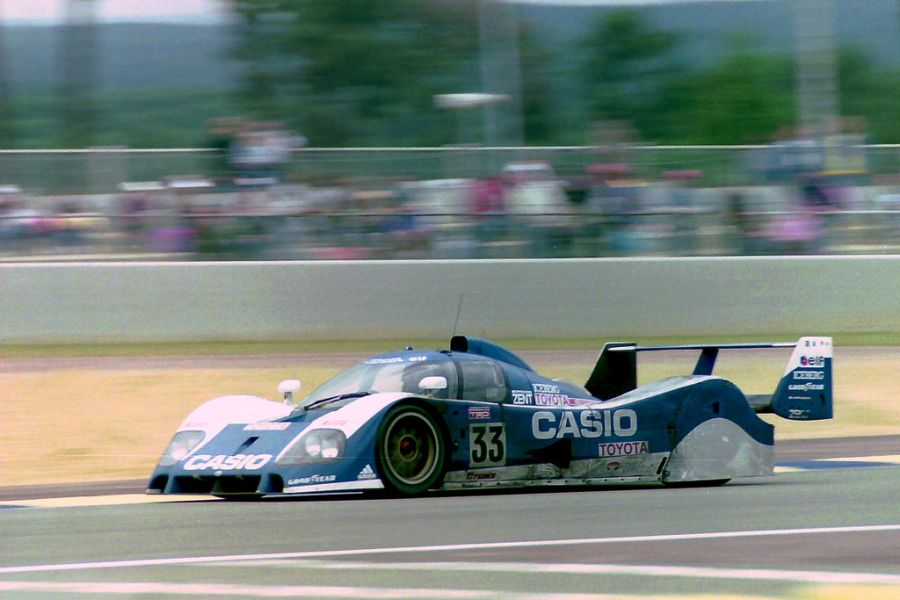
The #33 Toyota TS010 at 1992 Le Mans
1992 Le Mans podium for Toyota TS010
At Le Mans, Toyota fielded three cars. Two cars finished the race. The #33 TS010, driven by Kenny Acheson, Masanori Sekiya and Pierre-Henri Raphanel, finished in the second place, securing a podium for a Japanese team.
The #8 car, driven by Jan Lammers, Andy Wallace and Teo Fabi, finished in the 8th place. The third car, with number 7 on it and driven by Geoff Lees, David Brabham and Ukyo Katayama, stopped after 192 laps.
Three more podiums in the 1992 WSC season
In the rest of the season, Toyota recorded a double retirement at Silverstone and single retirements at Donington Park and Suzuka. At Donington, Lees and Brabham were third in the #7 car. At Suzuka, the #7 Toyota finished second, driven by Lees, Brabham and Lammers.
At the final round at Circuit de Nevers Magny-Cours, both TS010s would finish, taking 3rd and 4th behind Peugeot.

Toyota TS010 in 1992
Japanese championship titles in 1992
After the race at Suzuka, Toyota left a single TS010 in Japan to compete in the final two rounds of the All Japan Sports Prototype Championship. Geoff Lees and Jan Lammers took a victory at Fuji Speedway in the #7 car, beating Nissan Motorsport’s R92CP and Mazdaspeed’s MXR-01.
At season’s finale at Mine Circuit, Lees and Lammers were the winners again. This time, they were driving the #36 car. The #7 car, driven by Eddie Irvine, Tom Kristensen and Jacques Villeneuve, finished in the fourth place, securing manufacturer’s championship title for Toyota. Geoff Lees was also the C class driver’s champion.
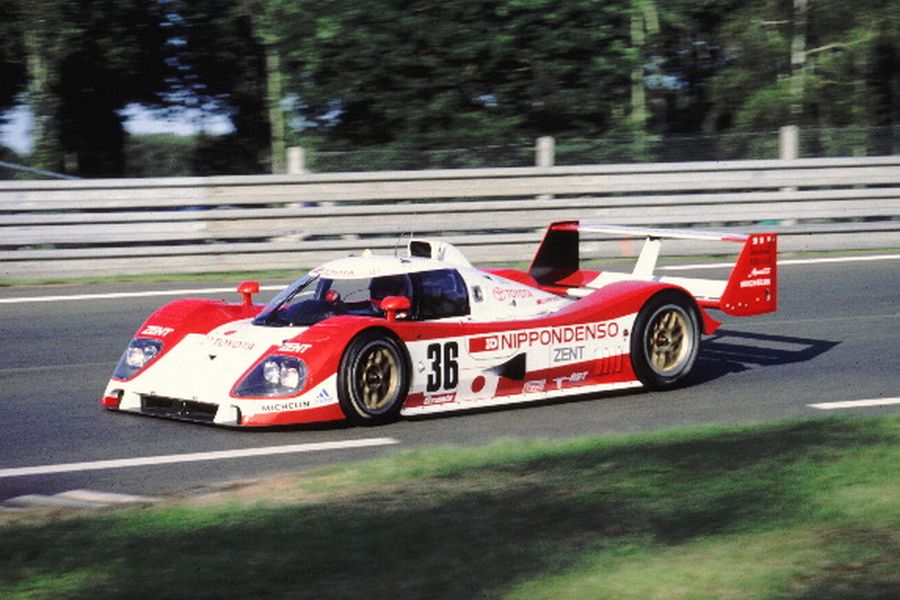
The #36 Toyota TS010 at 1993 Le Mans
24h Le Mans was the only race in 1993
In 1993, both the World Sportscar Championship and All Japan Sports Prototype Championships were canceled. It meant that the TS010s had no championship to race.
The only event in 1993 was the Le Mans 24 hours, where Toyota had three completely new chassis, built specifically for this race. The ’93 model was slightly different, with exposed rear wheels, as the change in regulations forced the teams to remove the aerodynamic rear wheel covers.
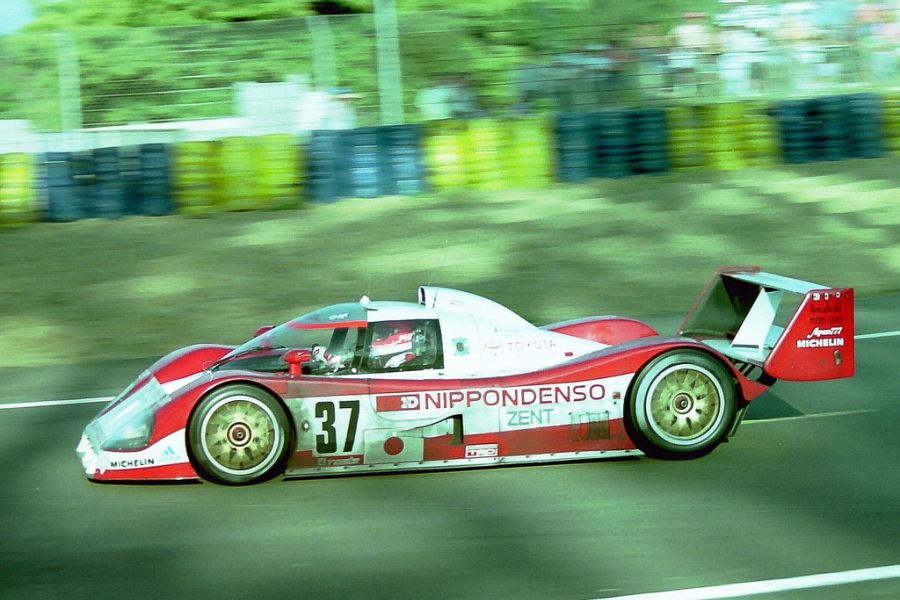
The ’93-spec Toyota TS010 has uncovered rear wheels
Retirement for TS010 following 1993 Le Mans
Eddie Irvine, Masanori Sekiya and Toshio Suzuki were the best of three crews, finishing fourth in the #36 car, behind three Peugeots. The #38 car, driven by Geoff Lees, Jan Lammers and Juan-Manuel Fangio II, finished in the 8th place. The #37 car, driven by Andy Wallace, Kenny Acheson and Pierre-Henri Raphanel, failed to finish the race.
Following TS010’s second Le Mans outing, a car was officially retired. In total, nine chassis were built. Toyota concentrated on their effort in the American IMSA championship, returning next year to Le Mans with 94C-V.
Toyota TS010 specifications
| Chassis | Carbon fibre monocoque |
| Length | 4,800 mm |
| Width | 2,000 mm |
| Height | 1,030 mm |
| Wheelbase | 2,750 mm |
| Weight | 750 kg |
| Engine | RV10 3,500cc 10-cylinder naturally aspirated |
| Power | 600-700 hp |
| Gearbox | 6-speed manual |
| Transmission | rear wheel drive |
| Suspension | double wishbones, push-rod actuated coil springs over dampers, anti-roll bar |
| Brakes | carbon ceramic discs all-round |
Photos: toyota-europe.com, Wouter Melissen/ultimatecarpage.com,




